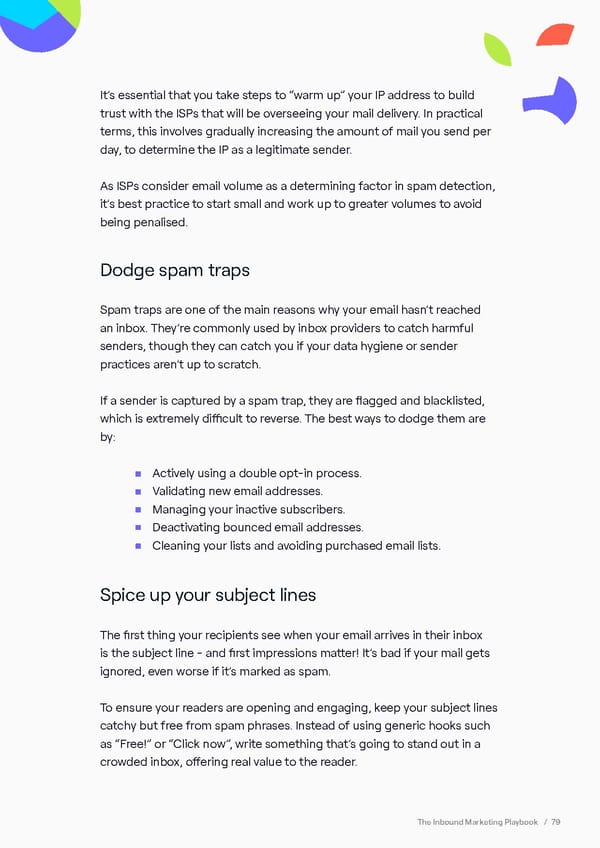It’s essential that you take steps to “warm up” your IP address to build trust with the ISPs that will be overseeing your mail delivery. In practical terms, this involves gradually increasing the amount of mail you send per day, to determine the IP as a legitimate sender. As ISPs consider email volume as a determining factor in spam detection, it’s best practice to start small and work up to greater volumes to avoid being penalised. Dodge spam traps Spam traps are one of the main reasons why your email hasn’t reached an inbox. They’re commonly used by inbox providers to catch harmful senders, though they can catch you if your data hygiene or sender practices aren’t up to scratch. If a sender is captured by a spam trap, they are flagged and blacklisted, which is extremely difficult to reverse. The best ways to dodge them are by: • Actively using a double opt-in process. • Validating new email addresses. • Managing your inactive subscribers. • Deactivating bounced email addresses. • Cleaning your lists and avoiding purchased email lists. Spice up your subject lines The first thing your recipients see when your email arrives in their inbox is the subject line - and first impressions matter! It’s bad if your mail gets ignored, even worse if it’s marked as spam. To ensure your readers are opening and engaging, keep your subject lines catchy but free from spam phrases. Instead of using generic hooks such as “Free!” or “Click now”, write something that’s going to stand out in a crowded inbox, offering real value to the reader. The Inbound Marketing Playbook / 79
 The No Fluff Guide to Inbound Marketing Page 81 Page 83
The No Fluff Guide to Inbound Marketing Page 81 Page 83